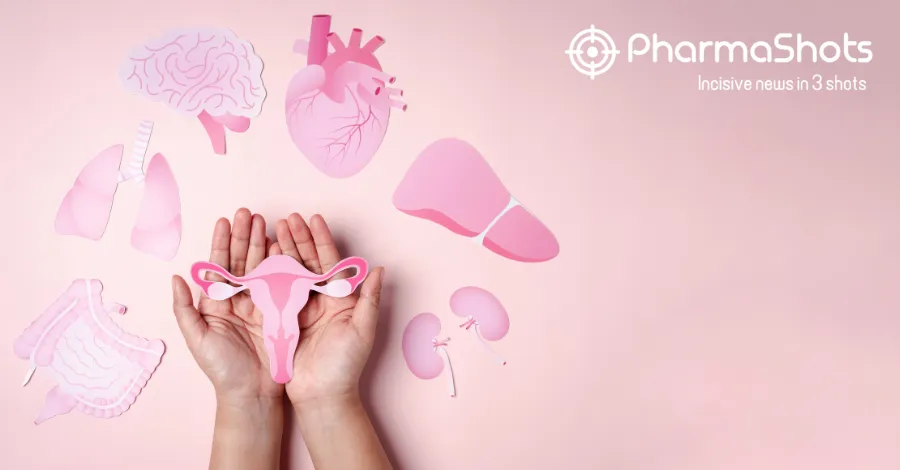Estrogen Dominance: Common Causes, Symptoms, and Solutions
Estrogen dominance is a common hormonal imbalance that can affect both men and women. It occurs when there is an excess of estrogen in the body, which can lead to a range of symptoms and health problems. Some of the most common causes of estrogen dominance include exposure to environmental toxins, stress, poor diet, and certain medications.
One condition that is closely linked with estrogen dominance is polycystic ovary syndrome (PCOS). Women with PCOS often experience high levels of estrogen, which can contribute to irregular periods, weight gain, and other symptoms. While the exact cause of PCOS is still unknown, it is believed that a combination of genetic and environmental factors may play a role. Understanding the link between estrogen dominance and PCOS is an important step in managing the condition and correcting excessive levels.
If left untreated, estrogen dominance can lead to a range of health problems, including infertility, breast cancer, and other hormone-related cancers. Fortunately, there are a number of solutions available to help balance hormones and reduce the symptoms of estrogen dominance. These may include dietary changes, exercise, stress reduction techniques, and natural supplements. By taking a proactive approach to managing estrogen dominance, individuals can improve their overall health and well-being.
Understanding Estrogen Dominance
Estrogen dominance is a hormonal condition that occurs when the level of estrogen in the body is higher than it should be, relative to other hormones. It can occur in both men and women, but it is more common in women. Estrogen dominance can occur due to various reasons, including the body’s inability to properly metabolize estrogen, environmental factors, and lifestyle choices.
Estrogen is a hormone that plays an essential role in the reproductive system, but it also has other functions in the body. It helps regulate bone density, cholesterol levels, and mood. High levels of estrogen can lead to a hormonal imbalance, which can cause a range of symptoms.
Estrogen dominance is often associated with Polycystic Ovary Syndrome (PCOS), a condition that affects women’s reproductive health. Women with PCOS have high levels of androgens (male hormones) and insulin, which can cause estrogen dominance.
Symptoms of estrogen dominance can vary from person to person, but they often include irregular menstrual periods, bloating, breast tenderness, mood swings, and headaches. Women with estrogen dominance may also experience weight gain, especially around the hips and thighs.
There are various solutions to help manage estrogen dominance. Lifestyle changes such as regular exercise, a healthy diet, and stress reduction can help regulate hormone levels. Hormone replacement therapy, supplements, and medications can also be used to manage estrogen dominance. It is important to consult a healthcare provider to determine the best course of treatment for individual needs.

Common Causes of Estrogen Dominance
Estrogen dominance occurs when there is an imbalance of estrogen hormones in the body. This can happen due to various reasons. Some of the common causes of estrogen dominance are discussed below:
Diet
Diet plays a crucial role in regulating hormone levels in the body. Consuming a diet that is high in processed foods, sugar, and unhealthy fats can lead to estrogen dominance. On the other hand, a diet that is rich in fiber, healthy fats, and protein can help regulate estrogen levels.
Stress
Stress can disrupt the balance of hormones in the body, including estrogen. Chronic stress can lead to an increase in cortisol levels, which can interfere with the production of other hormones, including estrogen.
Chemicals
Exposure to chemicals such as xenoestrogens, pesticides, and endocrine disruptors can lead to estrogen dominance. Xenoestrogens are synthetic substances that mimic the effects of estrogen in the body, while endocrine disruptors interfere with the normal functioning of the endocrine system.
Medications
Certain medications can also lead to estrogen dominance. For instance, hormonal birth control pills contain synthetic forms of estrogen and progesterone, which can disrupt the balance of hormones in the body.
Liver
The liver plays a crucial role in metabolizing hormones in the body. If the liver is not functioning properly, it can lead to an accumulation of estrogen in the body, leading to estrogen dominance.
Alcohol
Excessive alcohol consumption can also lead to estrogen dominance. Alcohol can interfere with the metabolism of estrogen in the liver, leading to an increase in estrogen levels in the body.
Phthalates
Phthalates are chemicals that are commonly found in soaps, shampoos, and other personal care products. Exposure to phthalates can lead to estrogen dominance.
Estrogen Dominance and PCOS
PCOS is a common endocrine disorder that affects women of reproductive age. It is characterized by the presence of multiple cysts in the ovaries, high levels of androgens, and anovulation. Estrogen dominance is believed to play a role in the development of PCOS, along with other hormonal imbalances, including elevated testosterone.
Lack of ovulation in PCOS results in continuous high levels of estrogen and insufficient progesterone. This hormonal imbalance can lead to a range of symptoms, including irregular periods, unwanted hair growth, and obesity. It is also associated with insulin resistance, which can lead to type 2 diabetes.
Studies have shown that women with PCOS have higher levels of estrogen than women without the condition. This is thought to be due to the fact that the cysts in the ovaries produce more estrogen than normal ovaries. In addition, the excess androgens in PCOS can be converted into estrogen in the body.
While estrogen dominance is not the only cause of PCOS, it is an important factor in the development and progression of the condition. Women with PCOS may benefit from treatments that help to balance their hormones, such as hormonal birth control, anti-androgen medications, and insulin-sensitizing drugs.
Symptoms of Estrogen Dominance
Estrogen dominance can cause a wide range of symptoms in both men and women. These symptoms can range from mild to severe and can vary depending on the individual. Some of the most common symptoms of estrogen dominance include:
- Irregular periods: Women with estrogen dominance may experience irregular periods or heavy bleeding.
- Weight gain: Estrogen dominance can cause weight gain, especially around the hips and thighs.
- Mood changes: Estrogen dominance can cause mood changes, including depression, anxiety, and irritability.
- Acne: Estrogen dominance can cause acne in both men and women.
- Fatigue: Estrogen dominance can cause fatigue and a lack of energy.
- Sex drive changes: Estrogen dominance can cause changes in sex drive, including a decrease in libido.
- Breast tenderness: Estrogen dominance can cause breast tenderness and swelling.
- Water retention: Estrogen dominance can cause water retention, which can lead to bloating and swelling.
- Mood swings: Estrogen dominance can cause mood swings, including irritability and anger.
- Insomnia: Estrogen dominance can cause insomnia and difficulty sleeping.
- Hair growth: Estrogen dominance can cause excess hair growth in women.
It is important to note that these symptoms can also be caused by other conditions, so it is important to speak with a healthcare provider to determine the underlying cause of the symptoms.
In the next section, we will discuss how estrogen dominance is linked with PCOS and its common causes.
Diagnosis of Estrogen Dominance
Diagnosing estrogen dominance can be challenging because its symptoms can be attributed to other health conditions. However, several tests can help identify the condition.
Hormone Levels
One of the most common tests to diagnose estrogen dominance is a hormone level test. This test measures the levels of estrogen, progesterone, and other hormones in the blood. Ideally, estrogen levels should be balanced with progesterone levels. If the estrogen levels are too high or the progesterone levels are too low, it may indicate estrogen dominance.
Liver Function
The liver plays a crucial role in metabolizing estrogen. If the liver is not functioning properly, it can lead to an accumulation of estrogen in the body. Therefore, testing liver function can help identify estrogen dominance.
Other Tests
Other tests that can help diagnose estrogen dominance include:
- Saliva hormone test: This test measures the levels of hormones in the saliva.
- Urine hormone test: This test measures the levels of hormones in the urine.
- Pelvic exam: This exam can help identify any abnormalities in the reproductive organs that may contribute to estrogen dominance.
It is important to note that the results of these tests should be interpreted by a qualified healthcare professional. They can help determine if the hormone levels are within the normal range and if any further testing is necessary.
Solutions for Estrogen Dominance
There are several solutions for estrogen dominance, including changes in diet, lifestyle, and nutrition. Sleep, detoxification, exercise, magnesium, antioxidants, and functional medicine can also help alleviate symptoms.
Diet
A diet rich in fiber, healthy fats, and cruciferous vegetables can help balance estrogen levels. Consuming foods that contain phytoestrogens such as flaxseeds, sesame seeds, and soy products can also help reduce estrogen dominance. Limiting alcohol and caffeine consumption can also help.
Lifestyle Changes
Reducing stress levels can help balance hormones. Practicing stress-relieving activities such as meditation, yoga, and deep breathing can help. Avoiding exposure to environmental toxins such as pesticides, plastics, and chemicals in personal care products can also help reduce estrogen dominance.
Nutrition
Supplements such as magnesium, B vitamins, and vitamin D can help regulate estrogen levels. Probiotics can also help balance gut bacteria, which plays a role in estrogen metabolism.
Sleep
Getting enough sleep is crucial for hormone balance. Aim for at least 7-8 hours of sleep per night.
Detoxification
Supporting liver function through detoxification can help eliminate excess estrogen from the body. This can be done through dietary changes, supplements, or working with a healthcare professional.
Exercise
Regular exercise can help regulate estrogen levels. Aim for at least 30 minutes of moderate-intensity exercise per day.
Functional Medicine
Working with a functional medicine practitioner can help identify underlying causes of estrogen dominance and develop a personalized treatment plan.
Conventional Medicine
In severe cases, conventional medicine may be necessary to treat estrogen dominance. Hormone replacement therapy or other medications may be prescribed by a healthcare professional. It is important to discuss the risks and benefits of these treatments with a healthcare professional before starting any medication.
Related Post: 4 Steps To Ensure Clinical Trial Compliance


